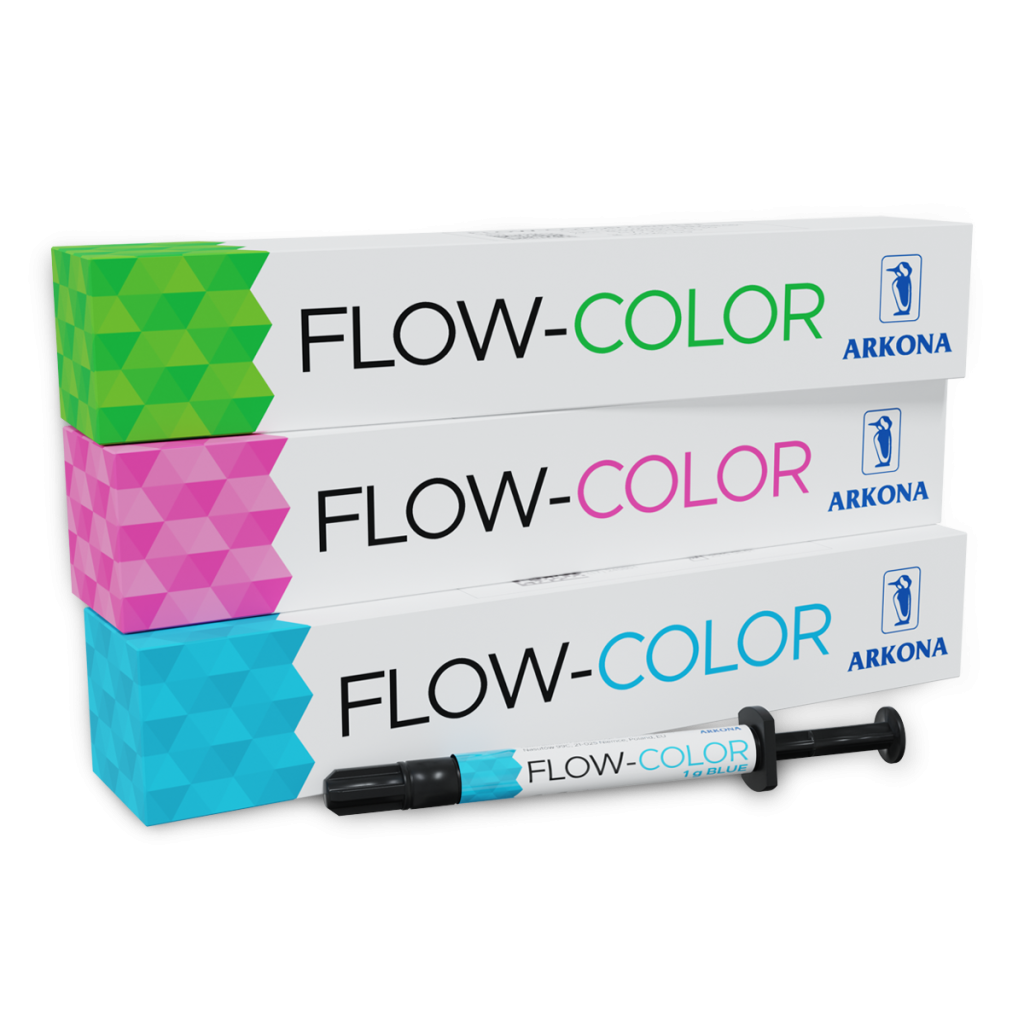


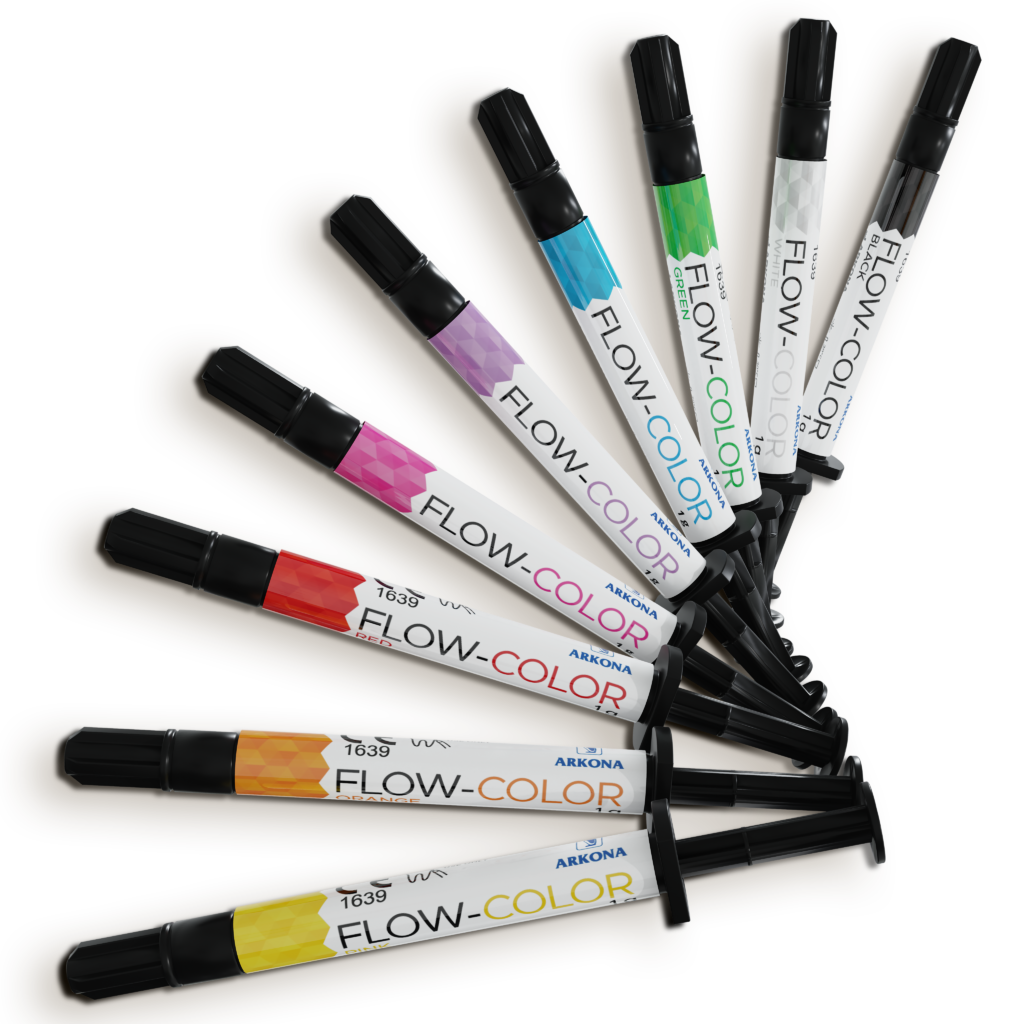
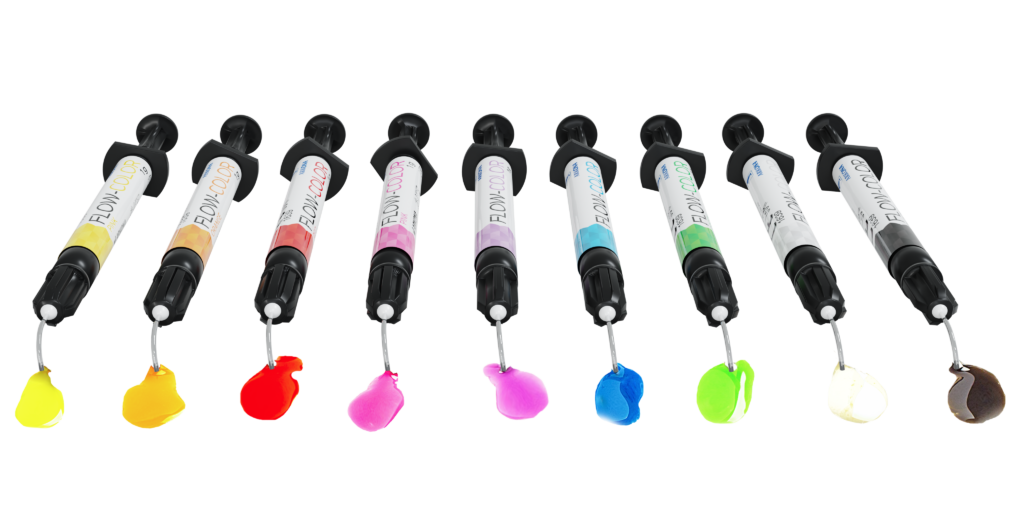



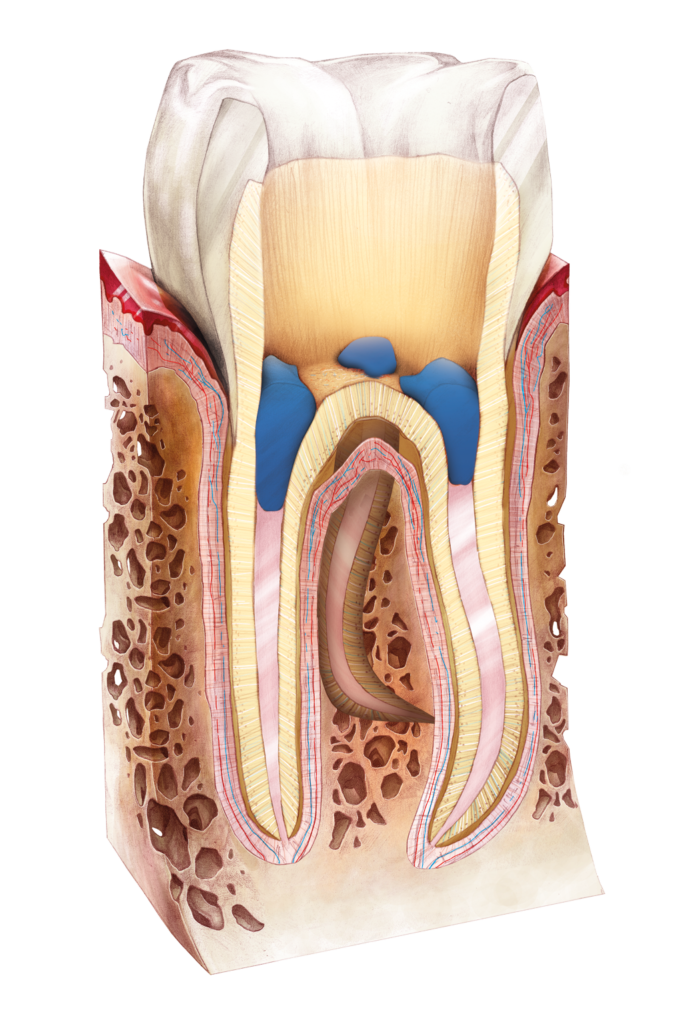
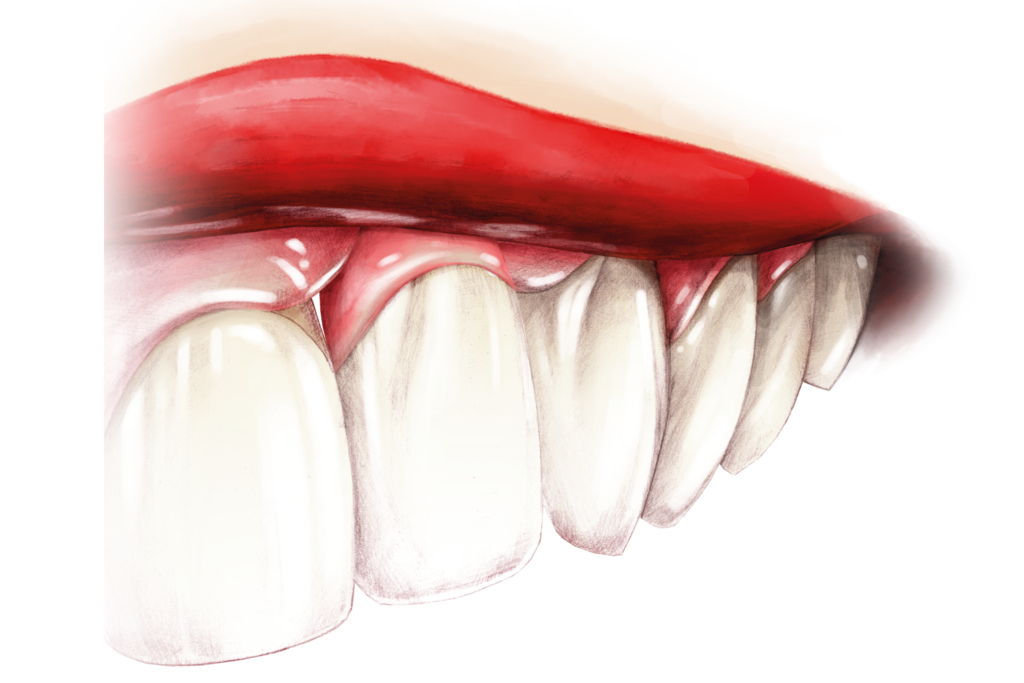
FLOW-COLOR makes it easier to find the mouths of the canals during re-endodontics, while protecting the roots from secondary caries. It effectively seals fissures and gaps in the enamel, helping parents to monitor the condition of the sealed teeth.
Excellent colour match: essential for gingival colour by mixing pink and red with tooth colours.
Exceptional resistance: resistant to oral conditions, with minimal water solubility and microscopic absorption.
Durability: Long-lasting durability of the intense 9 colours.
We mark the mouths of the canals to make them easier to find during re-endodontics. Many root canal filling materials darken, blend with dentin and become difficult to locate. A contrasting marking of the mouth immediately indicates its position. On X-rays, when two canals overlap, it is not always clear which one has been treated. The FLOW-COLOR drop will unambiguously indicate the correct canal and the correct treatment.
Marking the canal entrances also has a protective function – we protect the root filling from secondary caries. In the case of deep Class II cavities, the canal entrances are often close to the filling and the development of caries in this area is common due to the difficulty in keeping the restoration dry. Applying composite to the mouth effectively blocks caries access to the root canal material.
We varnish teeth with coloured varnishes to make it easier for parents to control the protection of their child’s teeth. Thanks to the visible colours, it is immediately clear that the tooth is protected against decay. The coloured varnishes also help with young patients – they reduce their fear of the procedure, making the visit friendlier and less stressful for them as well as for us.
We make temporary orthodontic procedures, such as raising the height of the stenosis, easier and shorter by using a contrasting FLOW-COLOR layer. This makes the composite easily distinguishable from the enamel, making the clinician’s job quicker and easier.
By mixing pink, red (sometimes also purple) with tooth colours, we achieve every shade of gum. As an alternative, a gingival-coloured COLOURANT stain can be used. For patients who have been missing teeth for a long time and whose bone and gums have atrophied, the lack of “gingival reconstruction” results in an unsightly end result. With the right colour, the reconstruction looks natural and harmonious.
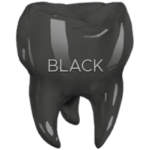
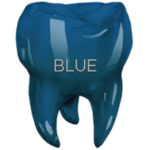
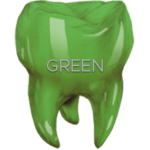
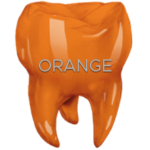
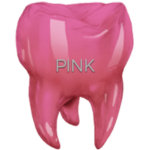
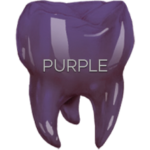

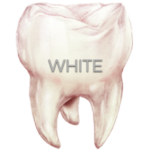
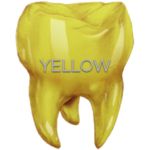
Syringe 1g
How many colors does the FLOW-COLOR composite have?
FLOW-COLOR is available in 9 colors: blue, pink, green, purple, red, yellow, white, black, orange.
What is the polymerization shrinkage of FLOW-COLOR?
The polymerization shrinkage of ARKONA flow composites is between 2.5% and 3.5% vol. (depending on the color, pink, blue and purple have the lowest shrinkage), which is a value similar to other good flow composites on the market.
Is it necessary to use a bonding system for FLOW-COLOR?
Yes. FLOW-COLOR can be used with any bonding systems. We recommend using V generation systems.
What can FLOW-COLOR be used for besides pediatric dentistry?
In addition to pediatric dentistry, FLOW-COLOR is used in:
Is FLOW-COLOR necessary for marking canal orifices?
Marking of canal orifices is increasingly performed by dentists. C characteristic marking of canal orifices facilitates diagnostics during subsequent tooth treatment. Doctors use different colors to mark different clinical cases, recommended markings:
Can ARKONA composites be used with any bonding system?
All ARKONA composites can be used with any bonding systems. We recommend using V generation systems.



Dowiedz się więcej! Kliknij tutaj
Information
In accordance with the applicable law, this website and its content presented on it are intended solely for professionals in the field of medical devices, i.e., in particular persons practising a medical profession or trading in medical devices and their employees or associates, as they contain advertising messages for products intended for use by users other than laypeople.